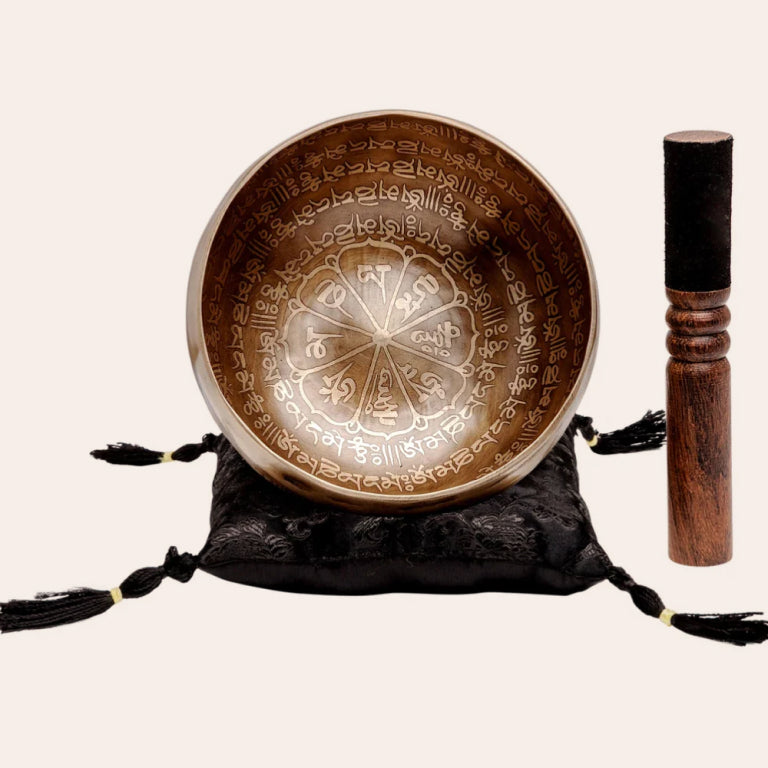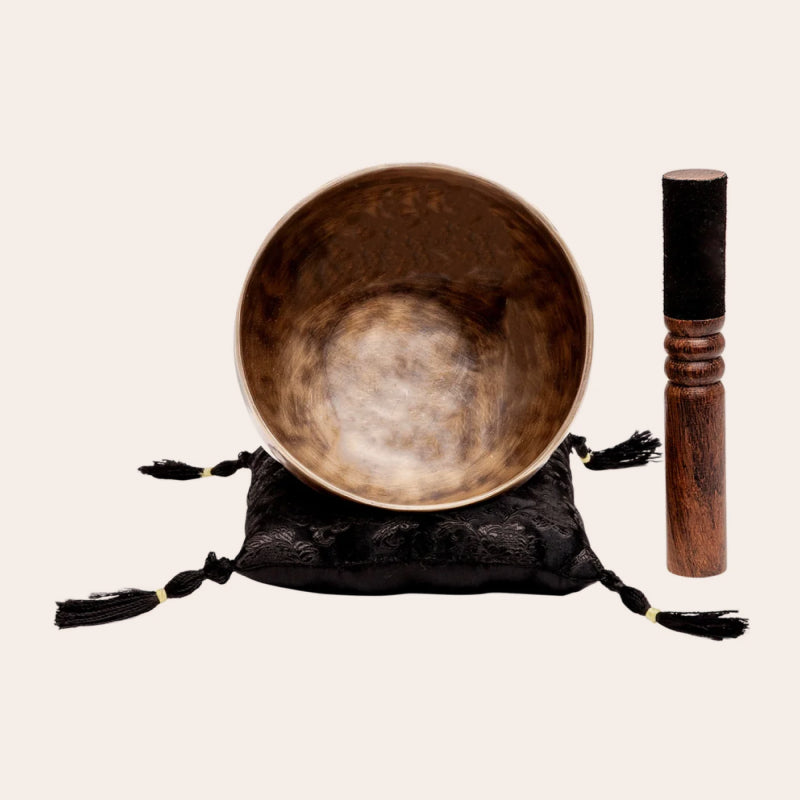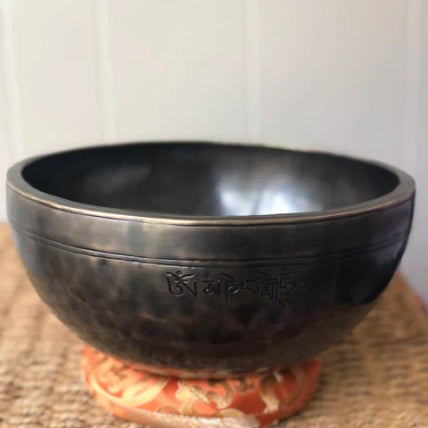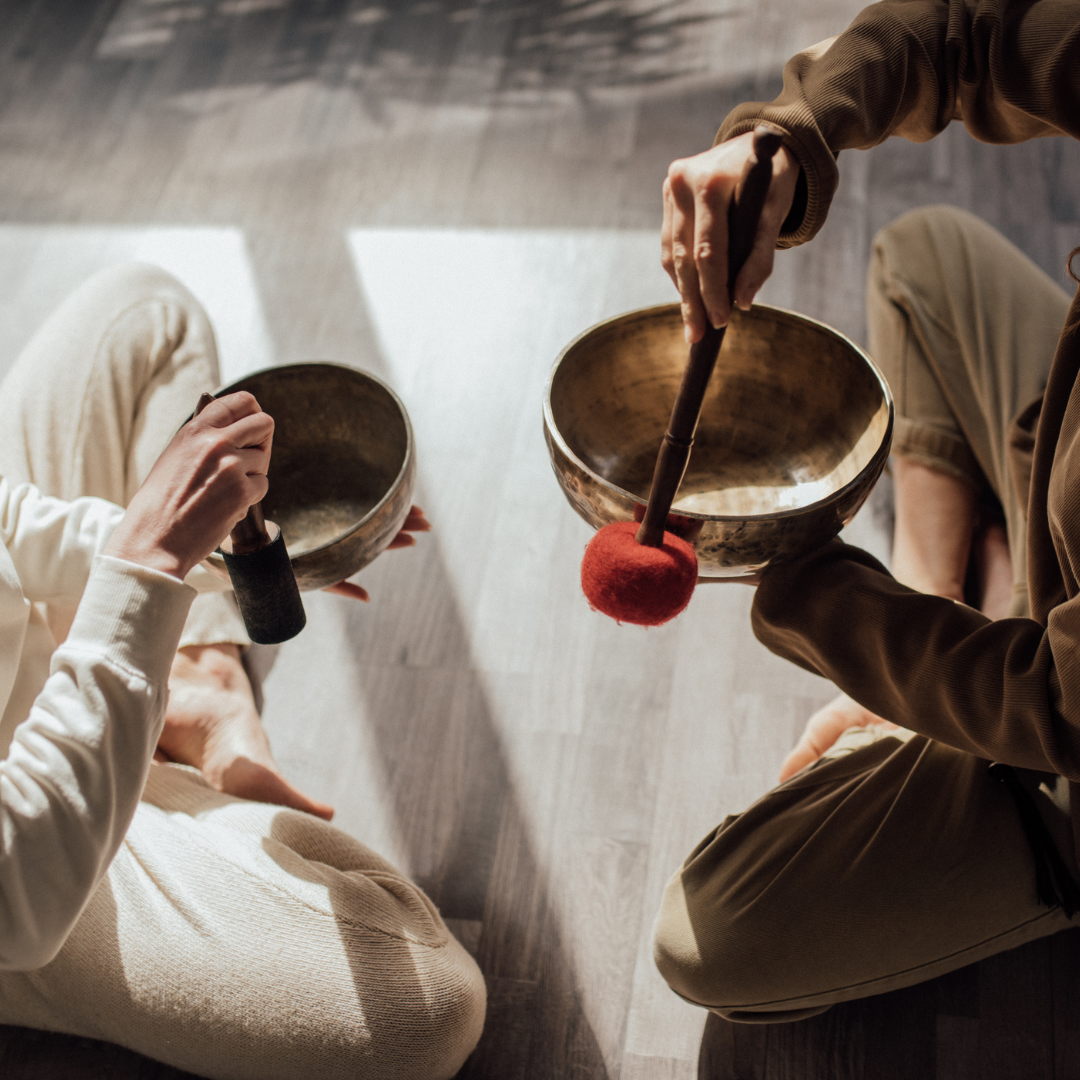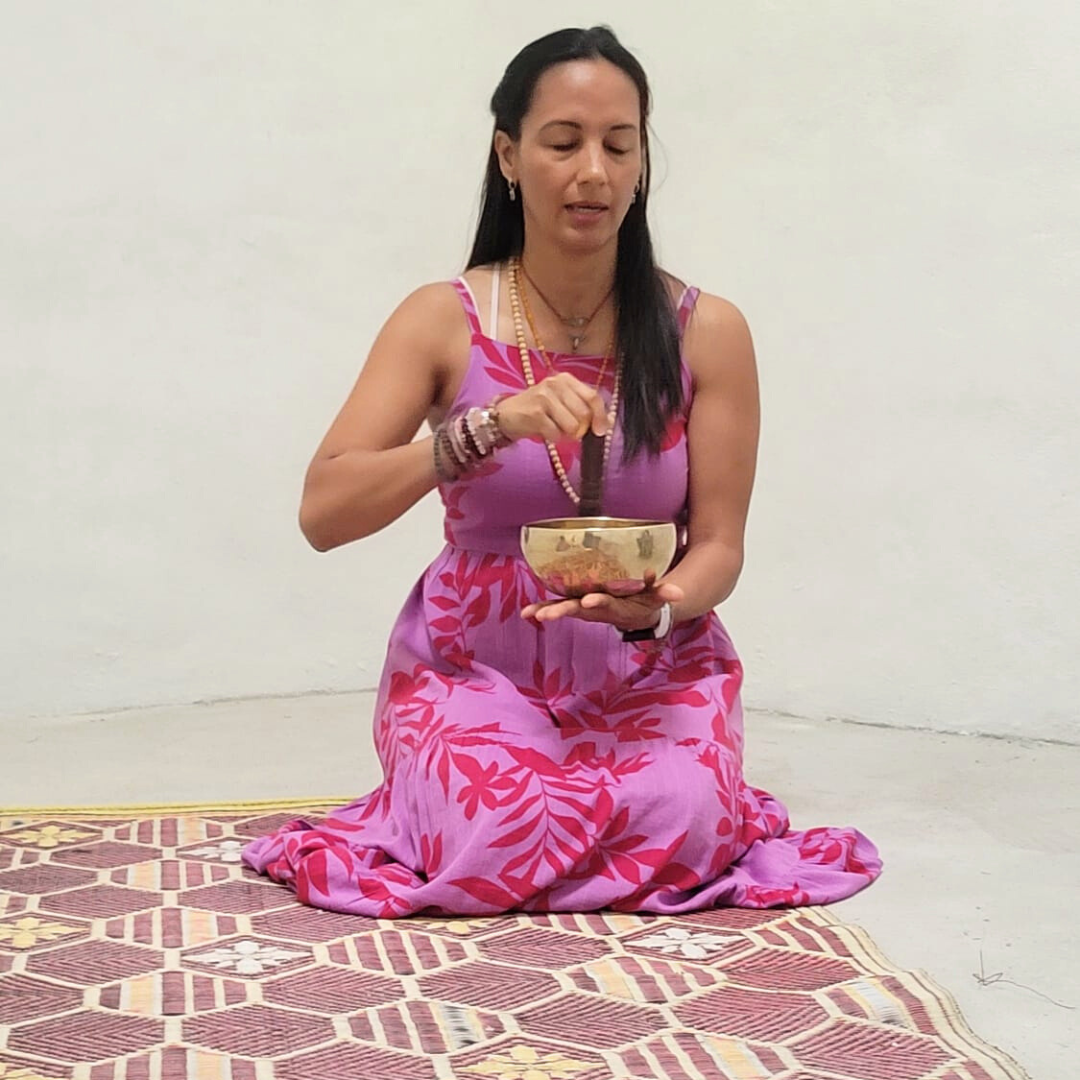In our uncertain and stressful world, it’s very hard to know how to find the Divine within yourself.
When do you feel close to the Divine?
One of the paths to Bhakti, or devotional yoga is that of sacred sound. In his book on singing bowls, Joseph Feinstein compares sound instruments to cutting tools: the sound they make should cut through our perception and open us up to greater awareness. The bell sound of a singing bowl cuts through the ‘noise’ of everyday life and connects us to a larger reality as it prepares our mind and spirit for meditation, which is a special activity separate from our normal daily routine. The bowl’s audible tones act as a wake-up call to deepen our awareness.
Why does this have such an effect on us? Why, when we hear the reverberation of a singing bowl or a bell in an acoustically live space, such as a large temple sanctuary, does it make us stop and listen carefully, as if it calls to us from some deep, primal place that we can’t quite recall but we somehow know that the sound is familiar?
Sound is linked to our feelings: it makes our cells and body tissues vibrate. You’ve experienced this when you hear a tune you like on the radio while driving – you start moving and grooving to the beat and singing along, and it lifts you out of the ordinary into a moment of connection with the extraordinary. The same thing happens when you hear a magnificent chorus singing or a symphony orchestra filling a concert hall with sounds of exquisite beauty so beyond description that it brings tears to your eyes or a smile to your lips.
Russill Paul wrote that Sound touches our Soul – the part of us that reflects something deep and eternal.
This goes back even further than our earliest memories. Our ears are open before we are even born; in the womb, a child hears its mother’s heartbeat and, later, sounds from the outside world, which means that before we perceive the world with any other sense, we HEAR it.
To hear is to be! Medical science has proven that the ear is the first organ to develop in the fetus, and it’s also the last organ to stop functioning during the process of death.
Joachim Ernst Behrend really said it best:
“The world is sound. It sounds in pulsars and planetary orbits, in the spin of electrons, in the microcosm and in the macrocosm. The depths of the ocean are filled with sound from the creatures who ceaselessly permeate the oceans with a network of electric and audible signals. Even plants and flowers ‘hear’ and differentiate between various kinds of music.”
Singing bowls from the Ohm Store are made by artisans who have continued their craft for generations, with skills and knowledge handed down through decades and, in some cases, centuries of producing these exquisite creations. The artisan chants mantras as the bowl is hammered and formed, often chanting ‘Om Mani Padme Hum,’ which translates as ‘Om, The Jewel in the Lotus.’ This can have several different meanings, but we often translate it as ‘the jewel of consciousness is in the lotus of the heart.’ It makes sense, doesn’t it, knowing that the atoms of the metal, vibrating to the strike of the artisans’ hammer, would also be affected by the vibrations of the audible chant during its creation, just as the fetus within the mother is affected by the vibrations of the lullaby it hears its mother humming. Childhood development research has shown that children who were sung to before birth and as infants have a stronger emotional bond with their parent, and show higher levels of linguistic and cognitive development, as well as better social connection and coordination.
In his study on Nada Brahma, or Sacred Sound, Behrend wrote, “To the ancient Chinese, the eyes constituted a yang type of sense organ: male, aggressive, dominating, rational, surface-oriented, analytical. The ears, on the other hand, are a yin sense: female, receptive, careful, intuitive and spiritual depth-oriented, perceiving the whole as one.” Since the 1960’s, we’ve known that the right brain hemisphere is the seat of art and intuition, and is considered the feminine side. Paul says this is why the quality of our hearing and the kinds of sounds we hear are so important; we gain healing and nourishment for our soul from the process.
In other words, to neglect our ears is to neglect our soul.
So how can our singing bowl practice feed our souls through the medium of sound?
Our ears are ten times more accurate in their sense of perception than our eyes, so when we sit in meditation, gently striking our singing bowl with a mallet or rubbing the striker around the edge to produce the sustained tone, we become more sensitive to our own inner vibrations. George Leonard noted, “It may also be a means to facilitate entrainment, to tune our vibrations so that we are more ‘in sync’ with our world and with the people around us.”
What, exactly, is entrainment? It’s the phenomenon of two vibrating bodies coming into ‘phase’, or synchronization, with each other so they vibrate together at the same level. Two heart-muscle cells do this when they’re brought near each other in a laboratory, and women’s monthly cycles sync up when they share close quarters, such as in a dorm room. There’s a really cool video demonstrating entrainment on YouTube, featuring a group of metronomes, which a person starts up at different times, but they gradually sync up and beat the same rhythm together.
When we focus on the sound of the singing bowl, we can discern its vibrations as the sound waves vibrate both in the air and in the metal of the bowl. If you’ve rubbed the striker around the rim of the bowl to get the sustained tone, and then held the bowl up in front of your forehead, you’ve heard the bell tone in ‘stereo’, and you’ve experienced the moving of the sound wave from one side to the other as the tone vibrates around the circular shape of the bowl. This concentration is ideal for focusing and bringing our thoughts and hearts to a calmer center place.
Nada Yoga is the yoga of sound: the embracing of vibration which connects our physical, psychological and spiritual selves and unites them to restore wholeness. To be of ‘sound body and sound mind’ literally produces harmony in our thoughts, words and deeds. As the Benedictine monks would say, listen with the ‘ear of the heart.’
“To be yogis is to devote our lives and our capabilities toward creating and sustaining harmony within ourselves and in our world.” – Russill Paul, The Yoga of Sound
Sources:
Sahara Rose Ketabi: The Yogic Path
Russill Paul: The Yoga of Sound
Joachim Ernst Behrend: Nada Brahma: Sacred Sound
Joseph Feinstein: The Singing Bowl Book
George Leonard: The Silent Pulse
Laura L. Brady, AUD, CCC-A: Benefits of Lullabies for Babies
© 2021, Dr. Sandra Sluberski
Word count: 1,191 words

